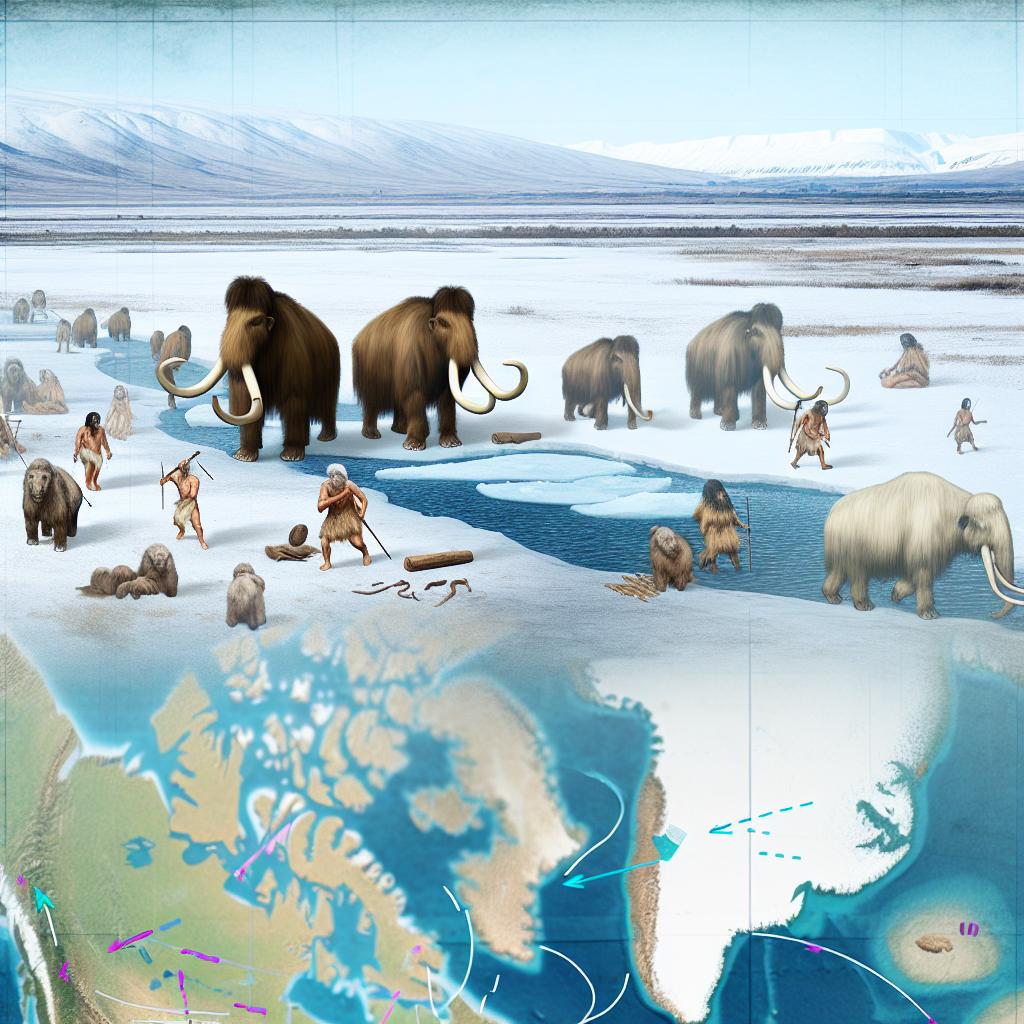Theories on Native American Migration to the Americas
The origin of Native Americans and their migration to the Americas is a subject of ongoing scientific investigation. Various theories attempt to explain how these early populations arrived and spread across the continent. Each of these theories provides insight into different aspects of human adaptability, environmental interaction, and technological advancements during prehistoric times.
Land Bridge Theory
One of the most widely accepted hypotheses is the Land Bridge Theory. During the last Ice Age, approximately 20,000 years ago, a narrow strip of land known as Beringia stretched between modern-day Russia and Alaska. This land bridge is thought to have formed from receding sea levels, creating a passthrough that humans could use to migrate from Asia into North America.
The logic behind this theory is primarily environmental. During the Ice Age, glaciers locked up large amounts of Earth’s water, lowering sea levels significantly. This exposure gave rise to the land bridge, creating a natural corridor for migration. The geophysical and ecological characteristics of Beringia likely supported various animal species hunted by these early migrants, facilitating human passage.
Supporting Evidence
There is a substantial body of evidence to support the Land Bridge Theory. Archaeological sites in Siberia and Alaska reveal similarities in tools and artifacts, implying a shared cultural origin. The tools found at these sites often resemble those used by early Native American cultures, indicating a transfer of technology and skills.
Furthermore, DNA evidence has demonstrated genetic links between indigenous peoples of the Americas and groups native to Siberia. This connection is a pivotal argument for this theory, with genetic studies tracing shared lineages back thousands of years. Notable research, including work on mitochondrial DNA markers, has supported these conclusions, indicating both direct and indirect migration patterns across the land bridge.
Coastal Migration Theory
Another significant hypothesis is the Coastal Migration Theory. It suggests that early humans might have used boats to travel along coastal paths from Asia to the Americas, reaching the continent before moving inland. This route would have followed the North Pacific coastline, which became increasingly accessible as the Ice Age receded.
The Coastal Migration Theory emphasizes maritime skills and adaptability to coastal environments. Given the challenges of the harsh inland conditions post-Ice Age, a coastal route would allow access to abundant resources such as sea life, which could sustain populations during their journey.
Support and Challenges
Archaeological findings support aspects of the Coastal Migration Theory. Sites located on the Channel Islands of California, for example, have been dated to more than 13,000 years ago. Remnants found at these sites suggest a diet rich in marine resources, evidence of which includes fish bones and shellfish remains. These findings suggest early inhabitants had the necessary skills for coastal survival, such as boat-making and fishing.
However, testing this theory presents significant challenges. The potential ancient coastal sites are likely submerged due to rising sea levels following the Ice Age, largely concealing them from contemporary archaeological techniques. Despite these obstacles, coastal exploration strategies are being refined with technological advances such as underwater archaeology.
Kelp Highway Hypothesis
A variation of the coastal route idea is the Kelp Highway Hypothesis. According to this scenario, early humans journeyed along a nutrient-rich corridor enriched by kelp ecosystems. These kelp beds would have extended from Japan to Alaska, providing abundant marine life as reliable food resources.
The Kelp Highway Hypothesis considers how easy access to food resources would support coastal travel. Rich in biodiversity, kelp forests offer an ideal habitat for fish, shellfish, and marine mammals, giving migrating humans reliable sustenance without needing extensive land-based food foraging.
While evidence supporting this hypothesis is scant, it remains a compelling element of the broader discussion on human migration. Some archaeologists and paleontologists argue that the feasibility and allure of such an ecosystem make it a viable alternative in early human migration strategies.
Solutrean Hypothesis
The Solutrean Hypothesis is another perspective that is less conventional but intriguing nonetheless. It speculates that Europeans from the Solutrean culture could have been among the earliest settlers in North America. According to this theory, inhabitants of modern-day France and Spain used ice-age pack ice for their journey across the Atlantic, landing in North America.
Proponents of this hypothesis focus on the technological parallels between Solutrean stone tools and those later found in the Clovis culture of North America. These similarities concern the techniques used in flint knapping, a specialized method for creating sharp-edged tools. However, this theory lacks extensive scientific backing and remains controversial due to limited evidence supporting long-distance sea travel during that era.
Conclusion
Understanding the peopling of the Americas remains a complex and nuanced field of study. While each theory presented offers unique insights into the origins and migration patterns of early Native Americans, it is likely that multiple routes and migrations populated the continent. The migration story may involve concurrent land and sea passages, reflecting human adaptability and resilience.
As new archaeological and genetic research emerges, our understanding of these ancient migrations continues to evolve. Each piece of evidence contributes to a more comprehensive picture of human history and the intricate patterns of migration that shaped modern populations. The study of Native American migration remains a dynamic field, and future discoveries will undoubtedly refine our understanding of these remarkable journeys.

